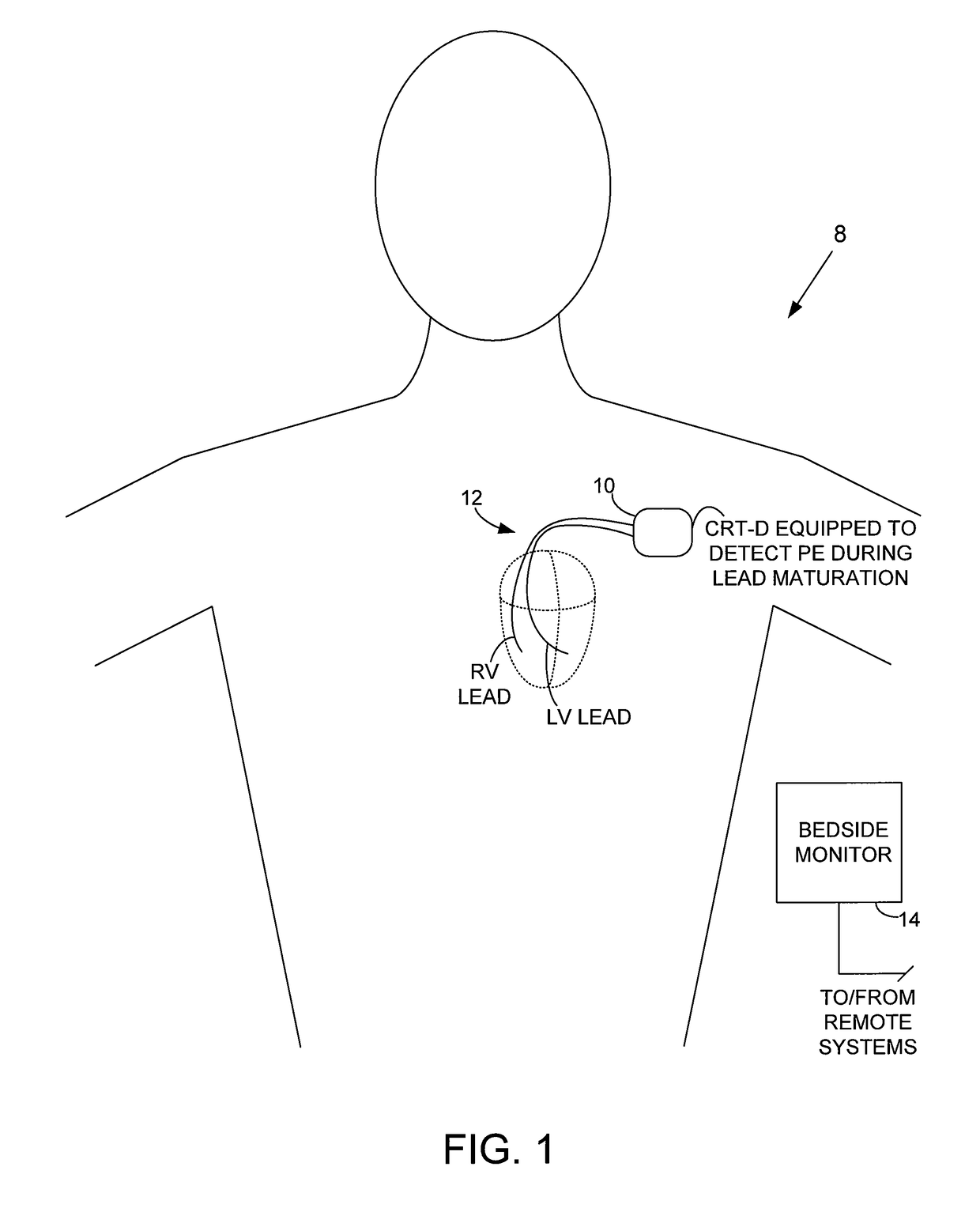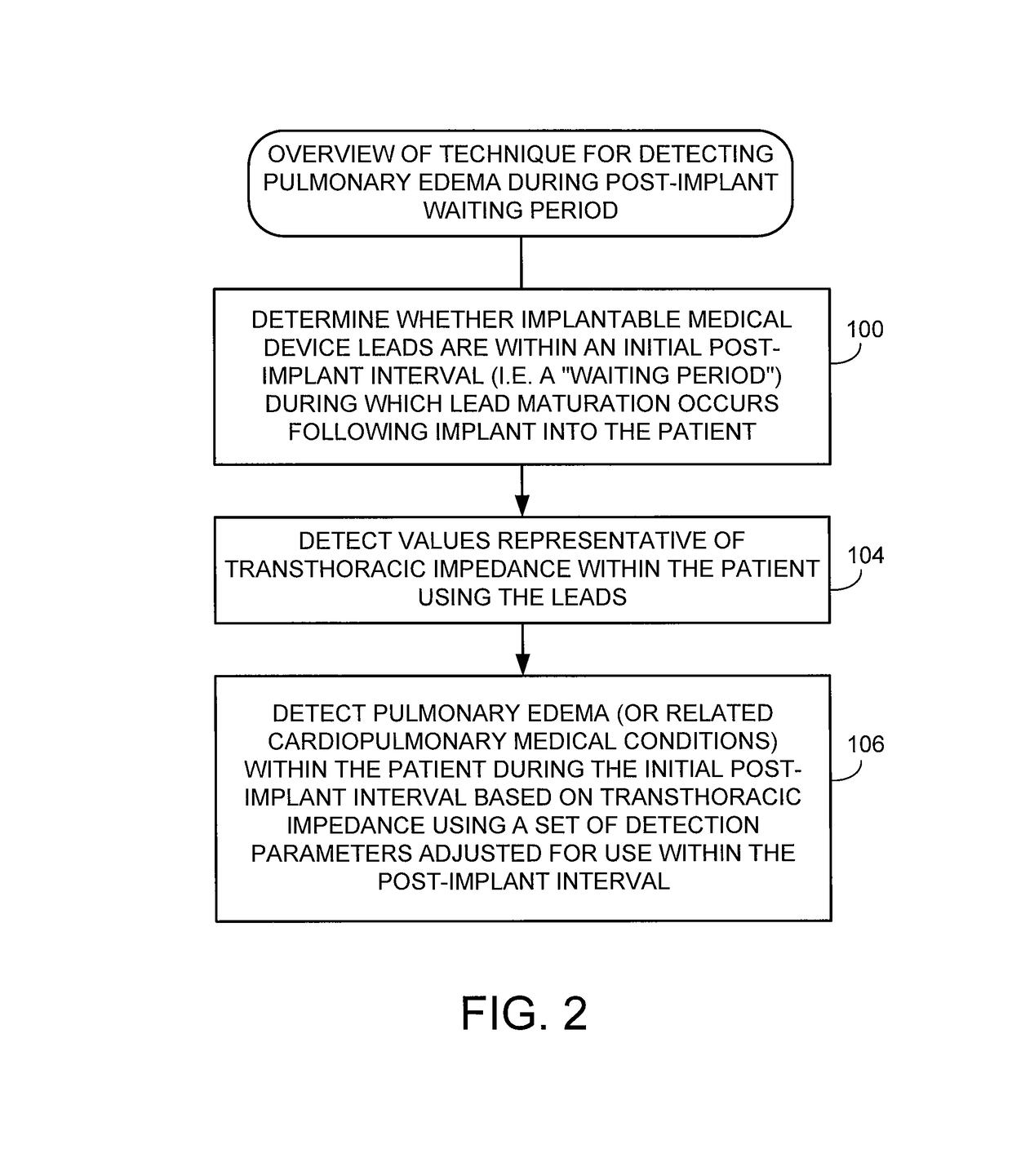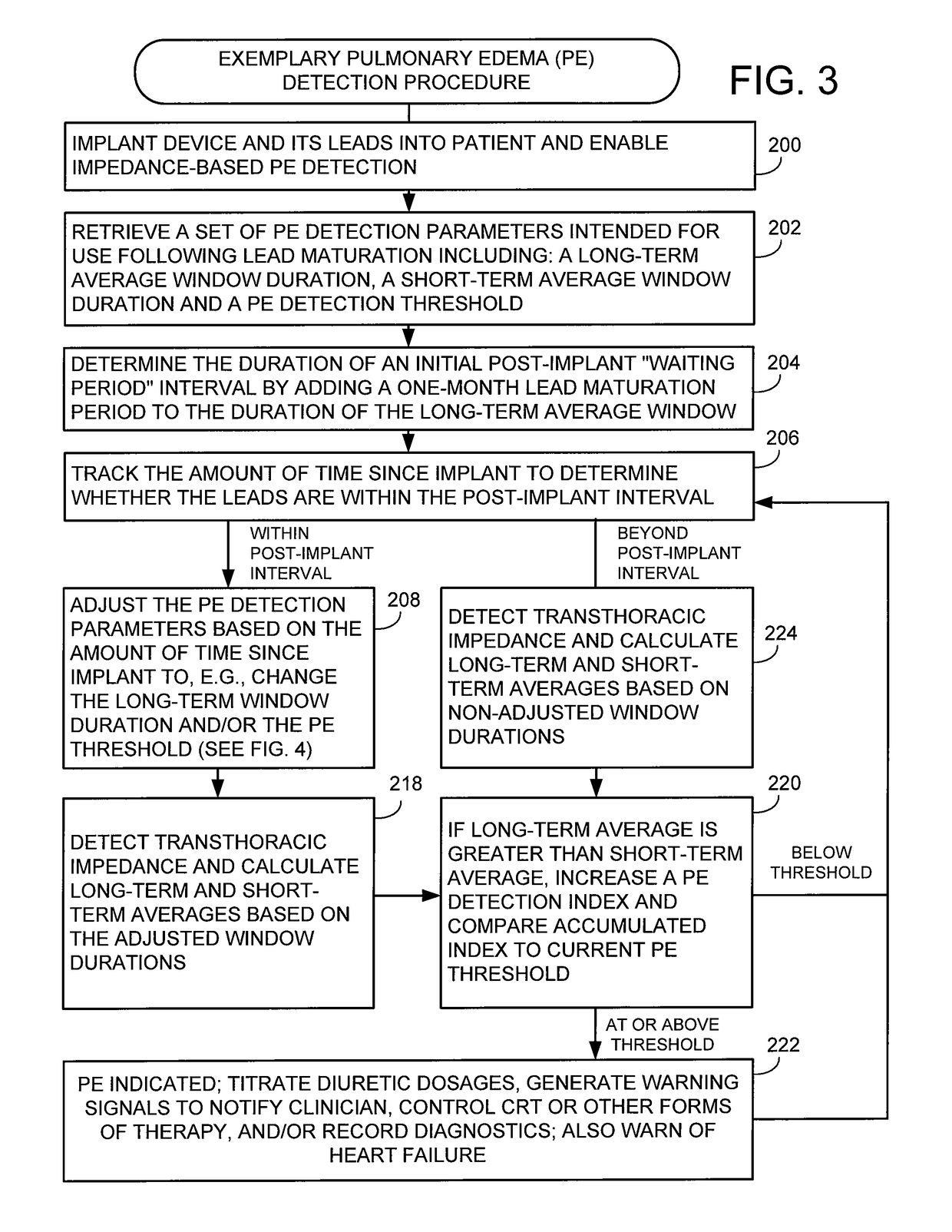System and method for detecting pulmonary edema based on impedance measured using an implantable medical device during a lead maturation interval
a technology of impedance measurement and pulmonary edema, which is applied in the field of implantable medical devices, can solve the problems of insufficient ejection or filling of blood in the ventricle, depriving vital organs of oxygen and nutrients, and affecting the edema detection threshold of pe, so as to reduce the duration of the long-term averaging window and the detection threshold of p
- Summary
- Abstract
- Description
- Claims
- Application Information
AI Technical Summary
Benefits of technology
Problems solved by technology
Method used
Image
Examples
Embodiment Construction
[0029]The following description includes the best mode presently contemplated for practicing the invention. This description is not to be taken in a limiting sense but is made merely to describe general principles of the invention. The scope of the invention should be ascertained with reference to the issued claims. In the description of the invention that follows, like numerals or reference designators will be used to refer to like parts or elements throughout.
Overview of Implantable System
[0030]FIG. 1 illustrates an implantable medical system 8 capable of monitoring for PE or related cardiopulmonary conditions based on transthoracic impedance (or similar electrical parameters.) In particular, the implantable system is equipped to detect PE during an initial post-implant interval during which lead maturation occurs, as well as after the interval has completed. To this end, medical system 8 includes a CRT-D 10 or other cardiac rhythm management device capable of applying impedance d...
PUM
 Login to View More
Login to View More Abstract
Description
Claims
Application Information
 Login to View More
Login to View More - R&D
- Intellectual Property
- Life Sciences
- Materials
- Tech Scout
- Unparalleled Data Quality
- Higher Quality Content
- 60% Fewer Hallucinations
Browse by: Latest US Patents, China's latest patents, Technical Efficacy Thesaurus, Application Domain, Technology Topic, Popular Technical Reports.
© 2025 PatSnap. All rights reserved.Legal|Privacy policy|Modern Slavery Act Transparency Statement|Sitemap|About US| Contact US: help@patsnap.com



